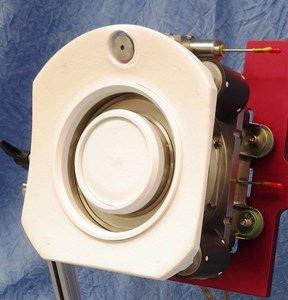Jul 2 2015
Aerojet Rocketdyne's improved XR-5 Hall Thruster (designated XR-5A) has successfully completed initial on-orbit validation testing on the unmanned X-37 space plane, which is presently on its fourth mission in space. The Air Force Research Laboratory, Space and Missile Systems Center, and Rapid Capabilities Office collaborated to host the XR-5A Hall Thruster experiment on Orbital Test Vehicle mission 4.
 Aerojet Rocketdyne's Upgraded XR-5A Hall Thruster Demonstrates Successful On-Orbit Operation
Aerojet Rocketdyne's Upgraded XR-5A Hall Thruster Demonstrates Successful On-Orbit Operation
The XR-5A Hall Thruster is an enhanced version of the Aerojet Rocketdyne XR-5 Hall Thruster. Both thrusters are five kilowatt class Hall Thrusters; however, the XR-5A incorporates modifications that improve performance and operating range. Aerojet Rocketdyne has manufactured and delivered 16 XR-5 Hall Thrusters and flown 12 to date. As with most new product introductions, Aerojet Rocketdyne is introducing a product upgrade to incorporate improvements identified after the initial low-rate production and flight programs.
Aerojet Rocketdyne has received orders for 64 flight thrusters to date and anticipates a strong future production for both commercial and government markets.
"The GEO Comsat market has embraced the use of five kilowatt Hall Thrusters, and Aerojet Rocketdyne not only has the only flight-proven five kilowatt Hall Thruster, we now have the only flight-tested, second-generation five kilowatt Hall Thruster," said Eileen Drake, chief executive officer and president at Aerojet Rocketdyne. "Satellite customers are very risk adverse, as many GEO Comsats have operational lives exceeding 15 years. So we are very pleased to bring a second generation product to market that provides our customers with that higher level of reliability and confidence."
The new XR-5A maintains the majority of the design and flight heritage from the original XR-5, with only minimal modifications. The only two changes to the thruster are the outer pole extending around the cathode, and a modification of the cathode position.